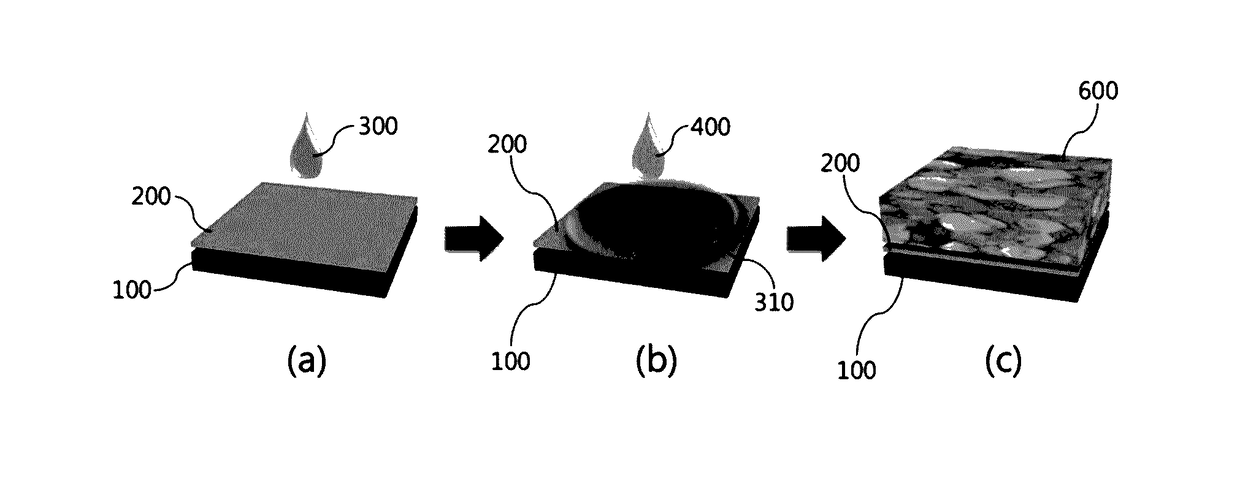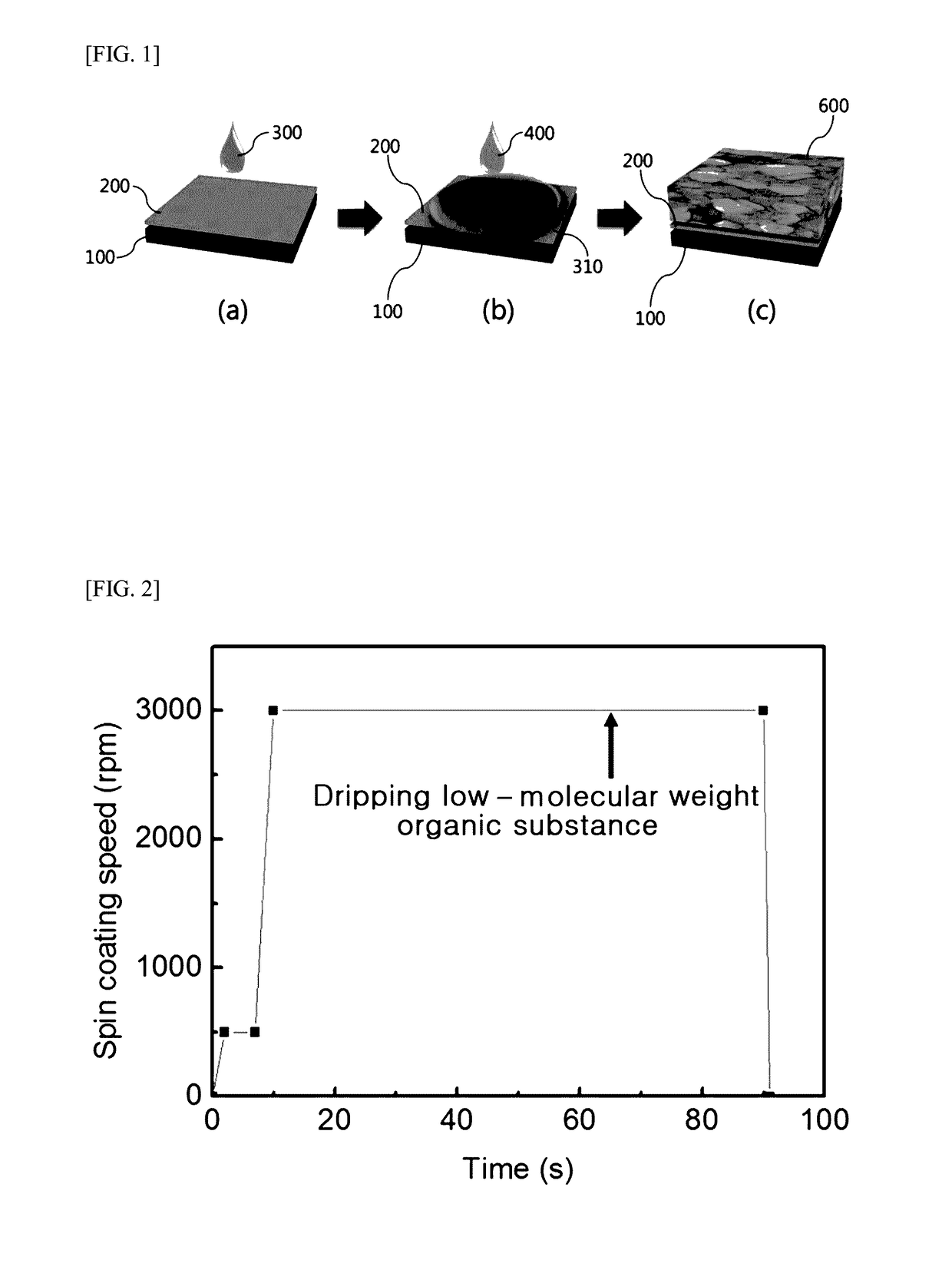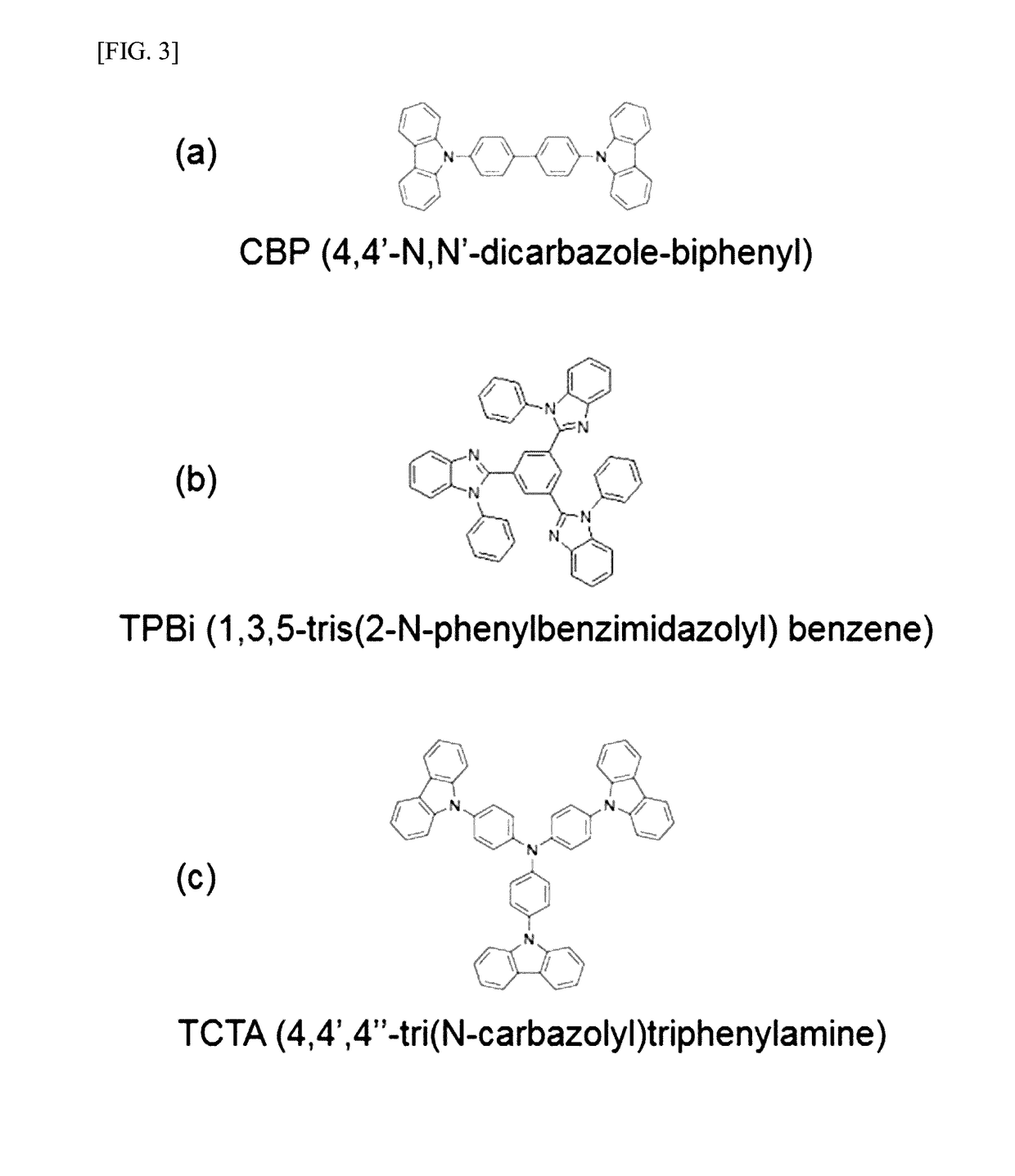Metal halide perovskite light emitting device and method of manufacturing the same
a technology of light-emitting devices and metal halide perovskite, which is applied in the direction of solid-state devices, chemistry apparatuses and processes, and light-emitting compositions. it can solve the problems of color purity deterioration, difficult adjustment of the size of the quantum dot during the synthesis process, and inability to manufacture low-priced products. it can reduce the grain size and improve the electrical characteristics. , the effect of improving the quality
- Summary
- Abstract
- Description
- Claims
- Application Information
AI Technical Summary
Benefits of technology
Problems solved by technology
Method used
Image
Examples
example 1
[0088]Formation of a Metal Halide Perovskite Light Emitting Layer Through Coating by Dripping a Low-Molecular-Weight Organic Substance Solution (an Organic-Substance-Assisted Nanocrystal Fixing Process)
[0089]First, CH3NH3Br and PbBr2 were mixed at a ratio of 1.05:1 and the resulting mixture was dissolved in dimethyl sulfoxide (DMSO) at 40% by weight to prepare a CH3NH3PbBr3 solution.
[0090]Next, TPBI was dissolved in chloroform at 0.03% by weight to prepare a TPBI solution.
[0091]Then, a conductive polymer material, PEDOT:PSS:PFI (a weight ratio of 1:6:25.4), was spin-coated with the CH3NH3PbBr3 solution thereon. The spin coating was continued by dripping the TPBI solution at 65 seconds after starting the spin-coating to form a CH3NH3PbBr3 layer in which the low-molecular-weight organic substance was included.
example 2
[0092]Formation of a Metal Halide Perovskite Light Emitting Layer Through Coating by Dripping a Low-Molecular-Weight Organic Substance Solution (an Organic-Substance-Assisted Nanocrystal Fixing Process)
[0093]A metal halide perovskite light emitting layer was formed in the same manner as in Example 1, except that TCTA was used as a low-molecular-weight organic substance instead of TPBI.
example 3
[0094]Formation of a Metal Halide Perovskite Light Emitting Layer Through Coating by Dripping a Low-Molecular-Weight Organic Substance Solution (an Organic-Substance-Assisted Nanocrystal Fixing Process)
[0095]A metal halide perovskite light emitting layer was formed in the same manner as in Example 1, except that CBP was used as a low-molecular-weight organic substance instead of TPBI.
PUM
| Property | Measurement | Unit |
|---|---|---|
| full width at half maximum | aaaaa | aaaaa |
| full width at half maximum | aaaaa | aaaaa |
| exciton diffusion length | aaaaa | aaaaa |
Abstract
Description
Claims
Application Information
 Login to View More
Login to View More - R&D
- Intellectual Property
- Life Sciences
- Materials
- Tech Scout
- Unparalleled Data Quality
- Higher Quality Content
- 60% Fewer Hallucinations
Browse by: Latest US Patents, China's latest patents, Technical Efficacy Thesaurus, Application Domain, Technology Topic, Popular Technical Reports.
© 2025 PatSnap. All rights reserved.Legal|Privacy policy|Modern Slavery Act Transparency Statement|Sitemap|About US| Contact US: help@patsnap.com



